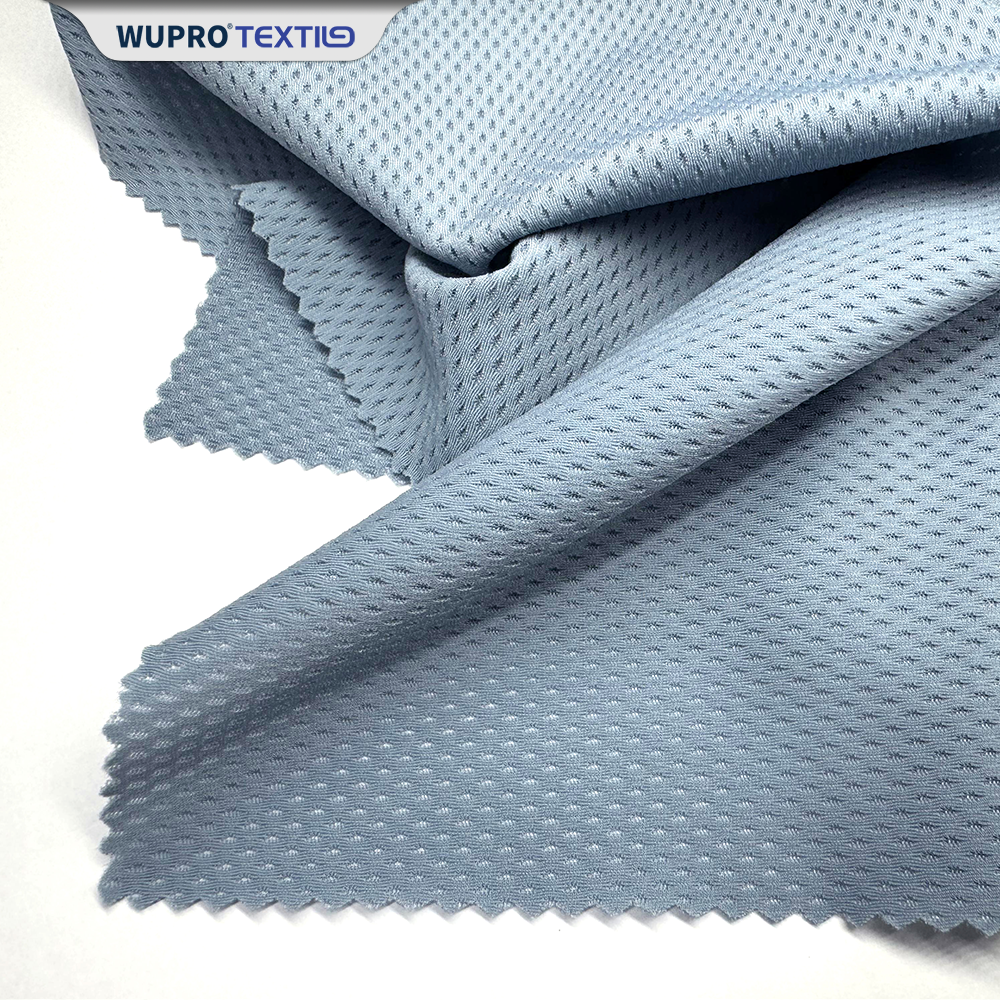Why Flame-Retardant Fabrics Are Essential for Safety in Textiles: A Comprehensive Guide
Why Flame-Retardant Fabrics Are Essential for Safety in Textiles
Table of Contents
Introduction to Flame-Retardant Fabrics
What Are Flame-Retardant Fabrics?
The Importance of Flame-Retardancy in Textiles
Applications of Flame-Retardant Fabrics
Types of Flame-Retardant Fabrics
Manufacturing Processes of Flame-Retardant Fabrics
Regulations and Standards Governing Flame R
May 19,2025

Why Flame-Retardant Fabrics Are Essential for Safety in Textiles
Table of Contents
- Introduction to Flame-Retardant Fabrics
- What Are Flame-Retardant Fabrics?
- The Importance of Flame-Retardancy in Textiles
- Applications of Flame-Retardant Fabrics
- Types of Flame-Retardant Fabrics
- Manufacturing Processes of Flame-Retardant Fabrics
- Regulations and Standards Governing Flame Retardants
- The Future of Flame-Retardant Fabrics
- Conclusion
- Frequently Asked Questions
Introduction to Flame-Retardant Fabrics
Flame-retardant fabrics play a pivotal role in safeguarding lives and properties across various industries. As we delve deeper into the textile sector, we uncover the significance of these specialized materials. Designed to resist ignition and self-extinguish when exposed to fire, flame-retardant fabrics are engineered through meticulous processes and advanced technologies.
What Are Flame-Retardant Fabrics?
Flame-retardant fabrics are textiles treated with chemical substances to prevent or slow down the spread of fire. These materials are crucial in environments where fire hazards are prevalent, ensuring that individuals and properties are protected from potential dangers. Flame-retardant fabrics can be made from a variety of fibers, including cotton, polyester, and aramid, each infused with flame-retardant properties through various treatments.
The Importance of Flame-Retardancy in Textiles
The necessity for flame-retardant fabrics extends far beyond mere compliance with safety regulations. These materials are essential for:
1. **Protection**: In sectors such as healthcare, hospitality, and manufacturing, flame-retardant fabrics provide critical protection against fire hazards, reducing the risk of serious injuries.
2. **Compliance**: Many industries are mandated by law to utilize flame-retardant materials to ensure safety standards are met. Compliance with these regulations is crucial for avoiding legal repercussions and enhancing workplace safety.
3. **Insurance Benefits**: Utilizing flame-retardant fabrics can lead to lower insurance premiums. Insurers often view these materials as a proactive measure in risk management.
4. **Enhanced Durability**: Flame-retardant treatments often enhance the durability of fabrics, ensuring they maintain their appearance and structural integrity even under harsh conditions.
Applications of Flame-Retardant Fabrics
Flame-retardant fabrics find applications across a myriad of industries, including:
1. **Healthcare**: In hospitals and clinics, where fire safety is paramount, flame-retardant bedding and drapery protect patients and staff.
2. **Automotive**: Car interiors are often treated with flame-retardant materials, ensuring passenger safety in the event of a fire.
3. **Aerospace**: Aircraft cabin interiors utilize flame-retardant fabrics to adhere to stringent safety regulations, safeguarding passengers during flights.
4. **Hospitality**: Hotels and restaurants employ flame-retardant textiles in furnishings and decor to minimize fire risks.
5. **Industrial Settings**: Protective clothing made from flame-retardant materials is essential for workers in industries such as oil and gas, where fire hazards are prevalent.
Types of Flame-Retardant Fabrics
Understanding the different types of flame-retardant fabrics is crucial for selecting the right material for specific applications. The main categories include:
1. **Inherent Flame-Retardant Fabrics**: These fabrics are made from fibers that possess flame-retardant properties naturally, such as aramid and modacrylic fibers. They do not lose their flame-retardant qualities over time or after washing.
2. **Treated Flame-Retardant Fabrics**: Fabrics such as cotton or polyester are treated with chemical flame-retardants. While effective, the flame-retardant properties may diminish after repeated washing.
3. **Blended Fabrics**: Combining inherent flame-retardant fibers with other materials, blended fabrics offer a balance of comfort and safety, making them suitable for various applications.
4. **Coated Fabrics**: These fabrics are coated with flame-retardant chemicals, often used in specialized applications like tents and tarps.
Manufacturing Processes of Flame-Retardant Fabrics
The manufacturing of flame-retardant fabrics involves several key processes:
1. **Fiber Selection**: Choosing the right fibers is crucial, as some fibers naturally resist flames better than others.
2. **Chemical Treatment**: For treated fabrics, fibers undergo a chemical treatment process, which infuses them with flame-retardant substances that enhance their fire-resistance capabilities.
3. **Weaving and Finishing**: The weaving process combines the treated fibers into fabric, followed by finishing treatments to enhance the final product's performance and durability.
4. **Testing and Certification**: Rigorous testing follows to ensure that the fabric meets industry safety standards before it can be marketed.
Regulations and Standards Governing Flame Retardants
Compliance with safety regulations is paramount for manufacturers and users of flame-retardant fabrics. Key standards include:
1. **NFPA (National Fire Protection Association)**: This organization outlines standards for the safe use of flame-retardant fabrics in various environments.
2. **ASTM (American Society for Testing and Materials)**: ASTM develops testing methods and specifications for assessing the flame resistance of textiles.
3. **ISO (International Organization for Standardization)**: ISO standards provide a global framework for evaluating and ensuring the safety of textile products.
Compliance with these standards is essential for ensuring consumer safety and gaining market trust.
The Future of Flame-Retardant Fabrics
The future of flame-retardant fabrics looks promising, with innovations on the horizon. Key trends include:
1. **Sustainability**: The demand for eco-friendly flame-retardant solutions is growing, spurring research into biodegradable and non-toxic flame-retardant treatments.
2. **Advanced Technology**: Innovations in nanotechnology may lead to more effective and durable flame-retardant fabrics that maintain their properties over time without harmful chemicals.
3. **Customization**: As industries continue to evolve, the need for customized flame-retardant solutions tailored to specific applications is increasing.
4. **Smart Fabrics**: The integration of technology with textiles, leading to “smart” fabrics that can respond to environmental changes, is an exciting area of development.
Conclusion
Flame-retardant fabrics are undeniably essential for safety in textiles, providing crucial protection across various industries. Their applications, compliance with rigorous standards, and ongoing innovations underscore the importance of these materials in safeguarding lives and properties. As we advance into an era where safety and sustainability are paramount, flame-retardant fabrics will continue to play a vital role in shaping a safer world.
Frequently Asked Questions
1. What is the difference between inherent and treated flame-retardant fabrics?
Inherent flame-retardant fabrics are made from fibers that naturally resist flames, while treated flame-retardant fabrics undergo chemical treatment to enhance their fire-resistance capabilities.
2. How do flame-retardant fabrics contribute to safety in the workplace?
Flame-retardant fabrics reduce the risk of fire-related injuries by preventing the spread of flames and providing critical time for evacuation during a fire incident.
3. Can flame-retardant properties diminish over time?
Yes, in treated fabrics, flame-retardant properties may diminish after repeated washing or exposure to harsh conditions, while inherent fabrics maintain their properties throughout their lifespan.
4. What industries are required to use flame-retardant fabrics?
Industries such as healthcare, aviation, automotive, and hospitality are often required to utilize flame-retardant fabrics to comply with safety regulations.
5. Are all flame-retardant fabrics safe for the environment?
Not all flame-retardant fabrics are environmentally friendly; however, there is a growing trend toward developing sustainable and non-toxic flame-retardant solutions. Always check for certifications that ensure they meet environmental safety standards.
Contact Us
E-mail:
Address:
1302, Zhongjun Fortune Center, Fengli Street, Shishi, Fujian, China.









